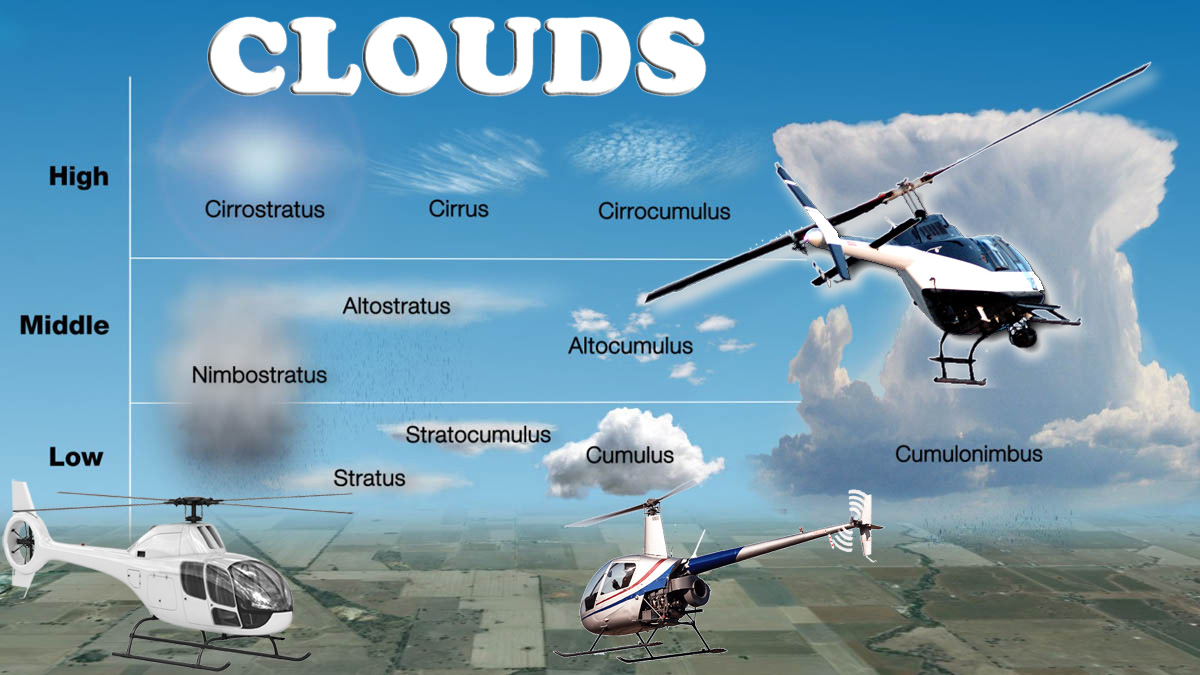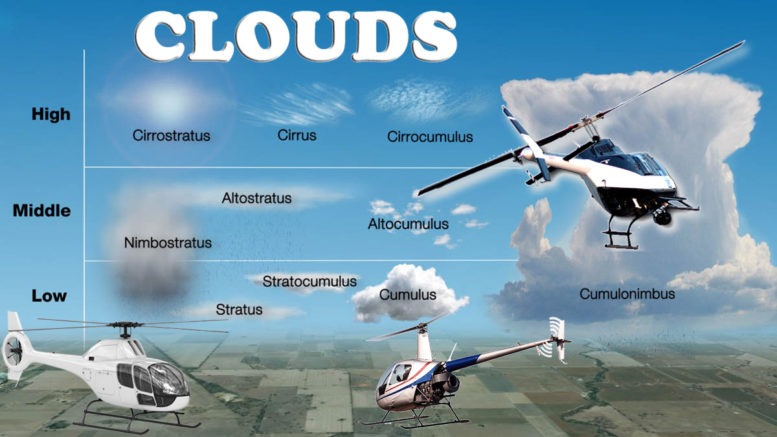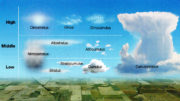METEOROLOGY is the study of the earth’s atmosphere. Most of us go through life, performing our daily chores, without paying too much attention to the ocean of air about us.
We run for cover when it rains and walk in the warm sunlight when the clouds disappear from the sky; we watch with awe the lightning leap from a thunderstorm and photograph or paint the beautiful, billowy clouds of a summer afternoon.
But here our interest ends, and we are missing some of the most fascinating facts mother nature has to offer.
In these lessons on meteorology we are going to Jearn about the clouds and what they mean to a pilot, instruments for measuring the meteorological elements, maps and charts, winds, fronts, fogs, storms and the hazards of icing.
None of the ideas are hard to grasp, and I’m quite sure you’ll consider this subject one of your favorites when we’ve finished. Those of you who dislike mathematics of any kind can cheer up because we’ll strike it only once in the problem of calculating cloud ceilings.
The first subject for our consideration is clouds. What are they? They are composed of particles of moisture which have been condensed from the air on small bits of dust which are floating all about us in the atmosphere.
How this condensation takes place is a story we shall postpone till another time. Clouds vary as to shape, size and altitude and are classified in four groups or “families.” I shall introduce you to these families and describe their members so you will recognize them the next time you meet them.
Here they are:
High family, usually starting at 20.000 ft.
1. Cirrus
2. Cirrocumulus
3. Cirrostratus
Middle -family, usually starting at 6,500 ft.
4. Altocumulus
5. Altostratus
Low family, usually starting at 1,500 ft.
6. Stratus
7. Stratocumulus
8. Nimbostratus
Vertical family, extending from 1.500 ft. through all cloud levels including high family.
9. Cumulus
10. Cumulonimbus
Now for some key words to help us describe them and keep them in their proper groups. Any cloud name including the word cirrus or cirro belongs to the high family. The word cirrus sounds like the word ice and this will be our clue because all clouds of the high family are composed of ice crystals due to the extreme cold of the upper altitudes.
All alto-clouds belong to the middle family; that’s a simple fact to remember. All clouds in the low family contain strato in their names (except the stratus itself), but don’t overlook the fact that some of the higher clouds are stratus combinations also, such as cirrostratus and the altostratus.
Here are some more hints to help us remember. The name cumulus sounds like the word accumulated and this describes the cloud. The cumulus cloud shapes (or cumuliform clouds as they are sometimes called) are tufts of clouds, floating in the sky separately from the general cloud masses. The stratus combinations (the name resembling the word straight) are flat, word nimbus or nimbo indicates a rain cloud.
Now let’s go down our list and see what we have.
1. Cirrus — Sounds like icy and is therefore a high cloud. They resemble thin wisps and are composed of ice crystals. Sometimes called “mare’s tails.”
2. Cirrocumulus — The form cirro tells us they belong to the high family; the form cumulus tells us they are cloud tufts. Putting the two together we have the description; tufts of cloud at very high altitudes, composed of ice crystals. A formation of them resembles rippled sand. They form a “mackerel sky,” forecasting bad weather.
3. Cirrostratus — Cirro means high family and stratus means sheet cloud. From these we have: a sheet or layer of cloud at high altitudes and composed of ice crystals.
4. Altocumulus — Alto indicates middle family; cumulus means tuft clouds. These tell us that this cloud is a series of tufts forming at moderate altitudes. Its appearance is that of many rows of sheep standing close together. When flying over an altocumulus roof you can imagine yourself flying over a white turbulent ocean.
5. Altostratus — Alto indicates middle family; stratus means sheet cloud. This one is, then, an even cloud sheet or layer forming at moderate altitudes.
6. Stratus — This is a simple one. A cloud sheet forming at a low altitude. It might be called an elevated fog.
7. Stratocumulus — In this case strato means low family as well as sheet cloud, and cumulus means tufts of cloud. This formation is a sheet or layer of tufts forming at low altitudes. Very little sky shows through the layer which usually will blow into long, dark, threatening rolls.
8. Nimbostratus — Nimbo means rain and stratus means sheet cloud of the low family. Actually, any cloud layer from which rain is falling belongs in this classification. It means poor visibility and low ceilings to the pilot.
9. Cumulus — This is the most beautiful cloud of all. It is a tuft, white, billowy, whipped cream like appearance, indicating bumpy flying for the pilot. When large in size, the base will be dark because of the inability of the sunlight to penetrate its mass. Belonging to the vertical family, its base can float at 1,500 feet, while its head can extend into the icy cirrus.
10. Cumulonimbus — Cumulo for tufts and nimbus for rain. This cloud is the daddy of them all. Its shape is somewhat like that of an anvil, with a black base and a towering, pure-white top reaching almost to the strato sphere. Its common name is “thunderhead” for it heralds the approach of stormy weather.
When you’re flying around the sky and you spot one of these babies, give it plenty of room. Vertical winds in its center can reach a speed of well over 100 m.p.h. and its head usually is filled with hailstones whirling around at a dangerous rate. Don’t get caught in one if you wish to keep healthy.
With this information, try your hand at cloud spotting. Don’t be discouraged if at first you see some types you can’t classify. First decide upon their altitudes to determine the family part of the name, and then their shapes to determine the rest of the name.
I have not included all the members of the families in the list I have given you; only those which will be most important to you as a pilot. Be sure to add it to your file! Study up on your Navigation lessons! Keep current!




Be the first to comment on "Cloud Types and Formations"